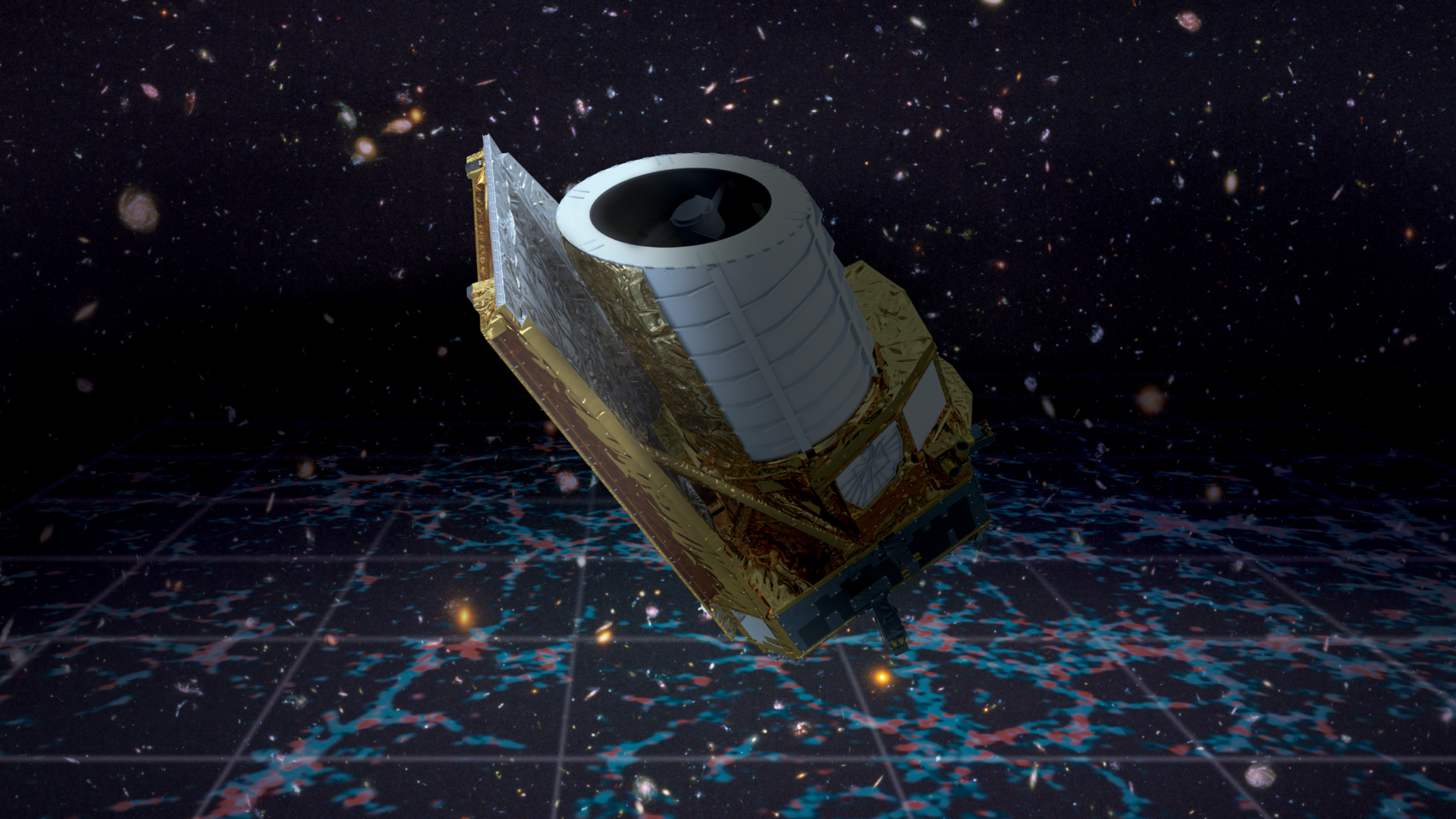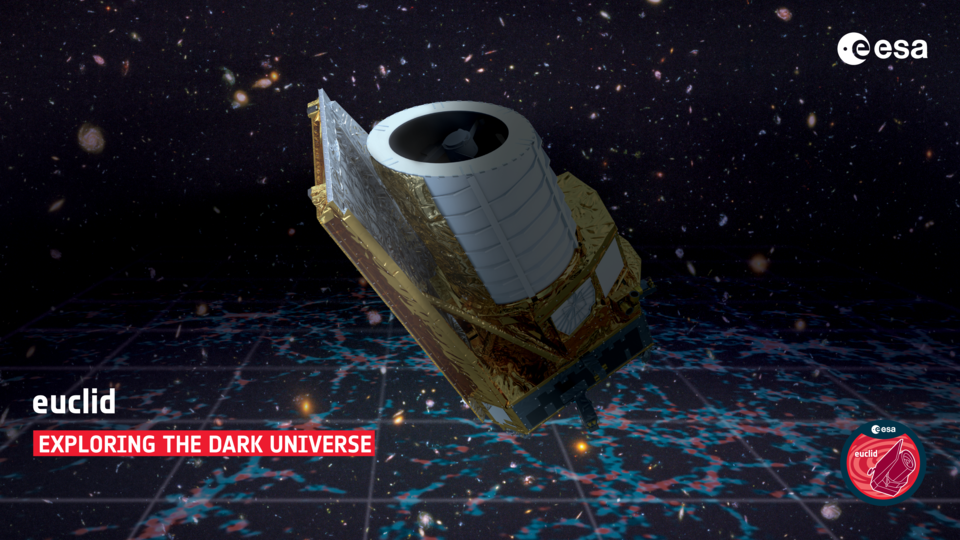Top five mysteries Euclid will help solve
Peering into the Universe beyond our galaxy, Euclid will try to untangle the mysteries of the cosmic web, and how invisible dark matter and exotic dark energy influence the structure and the course of the cosmos.
Overall, Euclid will address two core themes of ESA’s Cosmic Vision programme: What are the fundamental physical laws of the Universe? and How did the Universe originate and what is it made of?
So – what specific mysteries will Euclid help solve?

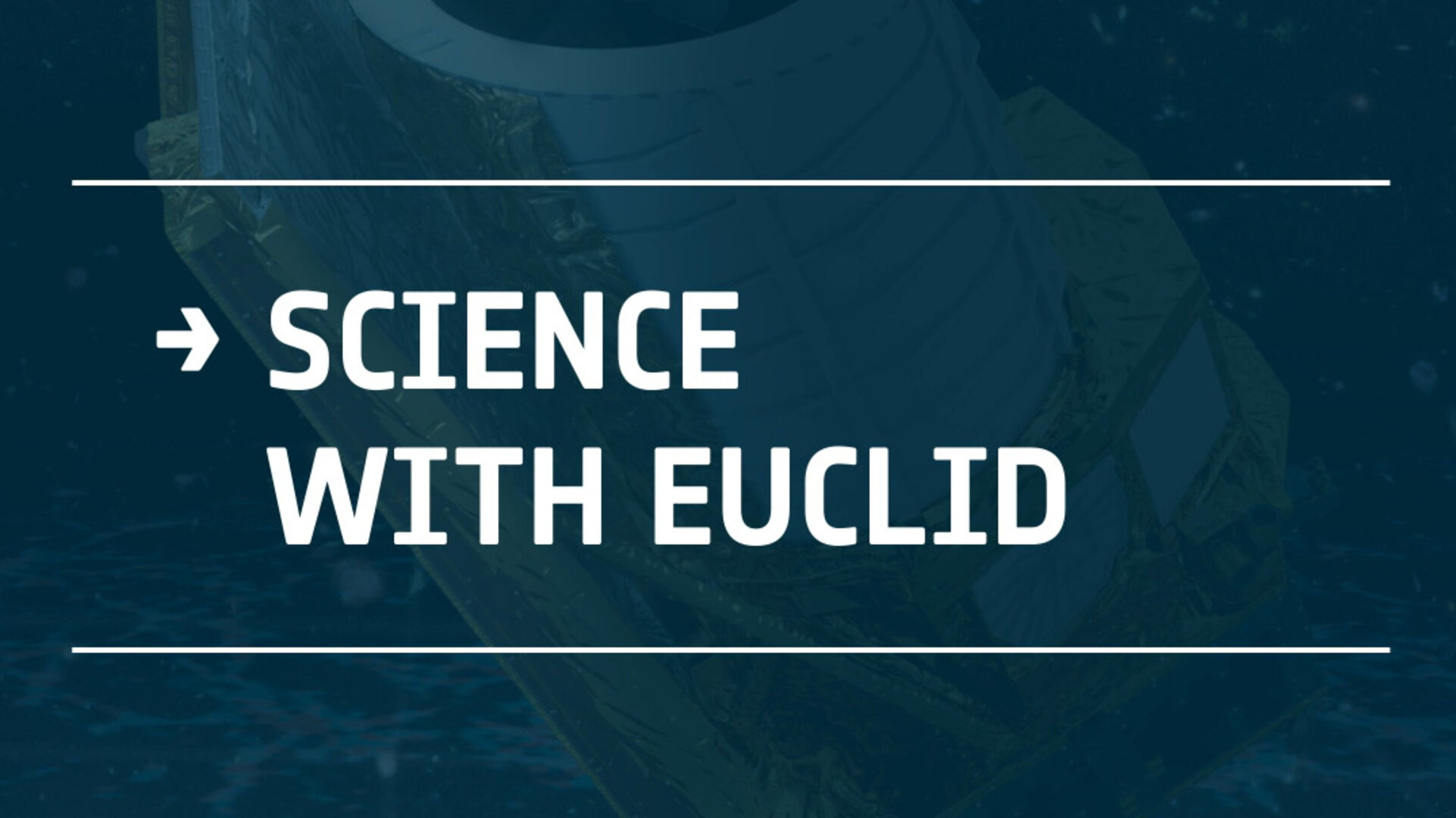
Access the video
1. What is the structure and history of the cosmic web?


Access the video
Matter in the Universe is arranged in an enormous network of structure resembling a ‘cosmic web’. This web consists of huge clusters of galaxies connected to one another by strands of gas and invisible dark matter. Between these lie gigantic empty regions called cosmic voids. Investigating the cosmic web is difficult because it is so large, with cosmic voids measuring hundreds of millions of light years across.
Euclid will perform an extensive survey of more than a third of the sky, gathering information about the shapes, sizes and positions of billions of galaxies. By peering deeply into the sky, Euclid will also look back in time, seeing ten billion years of cosmic history. This is because the further a star lies from us, the longer it has taken for its light to reach us.
By accurately mapping the shape and distribution of a huge number of galaxies, Euclid will reveal the structure and history of the cosmic web. Although dark matter is invisible to us, its presence distorts the light of distant galaxies. This effect is called gravitational lensing and can be observed by Euclid, revealing how dark matter is distributed in the Universe.
2. What is the nature of dark matter?
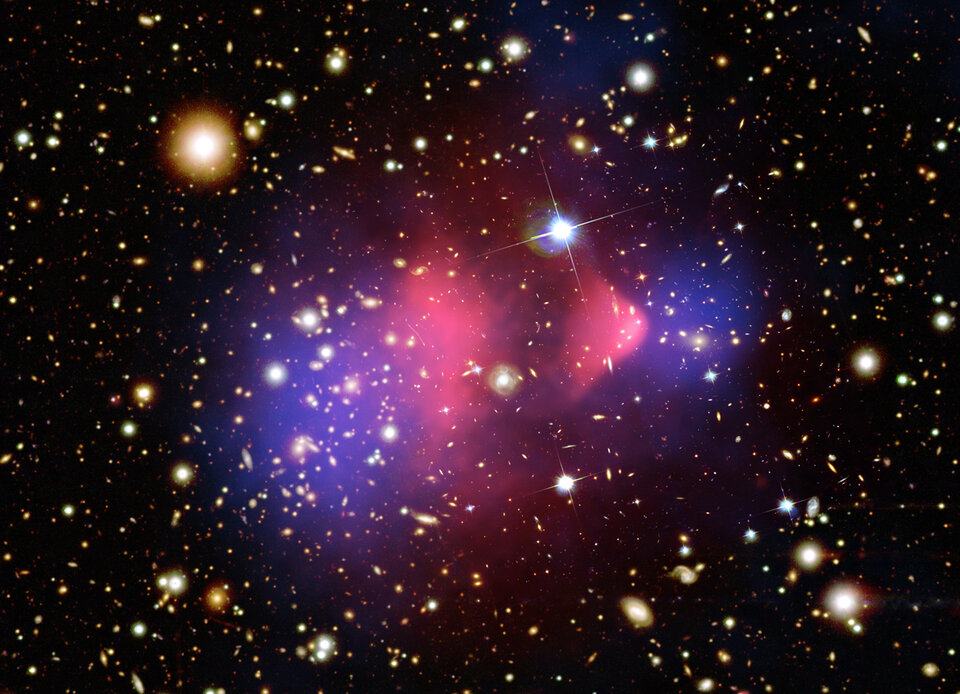
Despite decades of research we still don’t know what makes up the missing mass in the Universe, called dark matter. Comparisons of different cosmological models with measurements have so far favoured the hypothesis that most dark matter consists of ‘cold’ particles, which means that they are heavy and relatively slow-moving. However, it may well be that some dark matter consists of light-weight particles that move close to the speed of light, called ‘hot’ dark matter. The question remains how much – if any – of dark matter is hot.
Hot dark matter could be made up of ghost-like particles called neutrinos, which interact only very weakly with other matter. Although neutrinos were originally predicted to be massless, we now know that they have a very small mass.
We can use Euclid’s precise measurements of cosmic structure to uncover the total mass of neutrinos in our Universe, and with this how much of dark matter they can make up. Despite their gravitational pull, neutrinos’ fast-moving nature means that they tend to slow down the formation of structure, blurring it.
The most exciting discovery would be something we don’t expect. Euclid’s unparalleled observations of the extragalactic Universe might reveal the existence of new fast-moving particle species. The dark Universe detective is on the case!
3. How has the expansion of the Universe changed over time?
In the 1990s, cosmologists made the surprising discovery that the Universe is expanding faster than it used to. The Universe has been expanding since its birth in the Big Bang, but until recently scientists assumed that the speed at which it expands would slow down over time, as the gravity of all the matter in the Universe resists the expansion. Understanding the accelerating expansion remains one of the most compelling challenges of cosmology and fundamental physics.
Evidence for the changing expansion rate is based on the differences in the observed brightness and colour of so-called ‘standard candles’: astronomical objects with a known and consistent luminosity. More distant objects will appear dimmer to us, while the expansion of spacetime stretches the wavelength of light on its way to us, a reddening effect called redshift. Euclid will also measure the redshift of galaxies, which tells us their distances from us.
By scanning across more than a third of the sky, with a telescope sensitive enough to see light that has taken 10 billion years to reach us, Euclid will tell us how the expansion rate of the Universe has changed over time.
With its wide-angle view, Euclid will also investigate whether the expansion is the same in all directions. If it’s not, this would violate what’s known as the cosmological principle, which poses that on a large-enough scale, the Universe looks the same in all directions (isotropy) and from every location (homogeneity). This fundamental rule lies at the heart of almost all models and analyses used in cosmology.
4. What is the nature of dark energy?
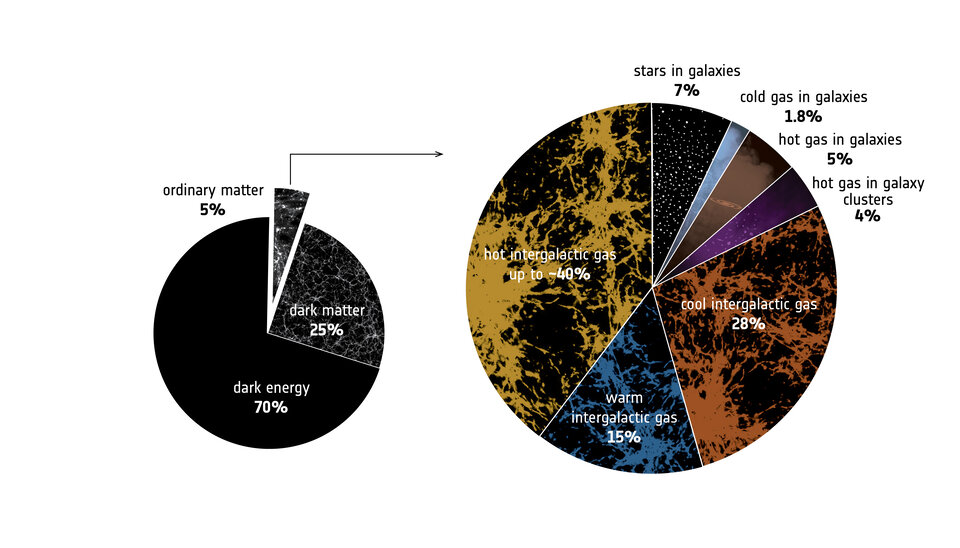
Knowing the details of how the Universe is (and has been) expanding is one thing, but we also want to know what drives it. Cosmologists have named this unknown component of the Universe ‘dark energy’. Nobody knows what it is made of, or if it is even a form of energy!
The best working hypothesis is something that Albert Einstein suggested back in 1917. He introduced the ‘cosmological constant’ into his calculations, a constant energy field that is present across the entire Universe. It is an intrinsic property of the vacuum of space, so the larger the volume of space, the more ‘vacuum energy’ (dark energy) is present and the greater its effects.
There are alternative suggestions. For example, the acceleration could be produced by a fifth fundamental force of nature that evolves with the expansion of the Universe. Contrary to the cosmological constant, this ‘quintessence’ is dynamical, time-dependent and not evenly distributed across space.
Each explanation for what dark energy is subtly alters the way the acceleration changes across cosmic time, but so far no experiment has been capable of measuring the acceleration in sufficient detail to distinguish between the possible solutions. Euclid’s extremely accurate and precise measurements will change this, hopefully revealing dark energy’s true nature.
5. Is our understanding of gravity complete?
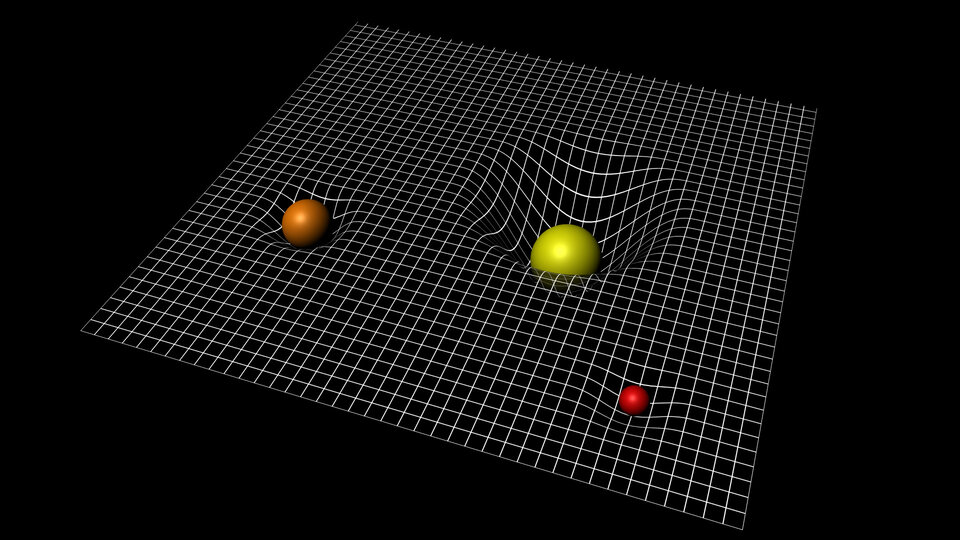
The existence of dark matter and the accelerating expansion of the Universe both suggest that we are missing something important. These two surprising discoveries have one thing in common: they are related to gravity. Gravity is what holds planets, stars, solar systems and even galaxies together. We experience it every day: it keeps our feet on the ground, and makes things fall down rather than in any other direction.
The best theory we have for describing gravity is Albert Einstein’s general relativity. It poses that gravity is not a literal force of attraction, but rather a consequence of massive objects bending spacetime. An object with mass deforms spacetime a bit like how a heavy ball would push down a trampoline mat. By bending the trampoline mat, lighter balls placed on the trampoline will automatically roll towards the heavy ball.
General relativity has other implications as well, including the existence of black holes and gravitational waves; time passes faster or slower for different observers depending on their relative speed, acceleration and the strength of the gravitational pull they experience; and the path of light is also affected by gravity.
The predictions of general relativity have been proven to be correct, time and time again. But no test of the theory has been made with high precision over the large distances and times that Euclid will cover. This way, Euclid will reveal if general relativity breaks down at the largest scales. If it does, physicists will need to go back to the drawing board.


